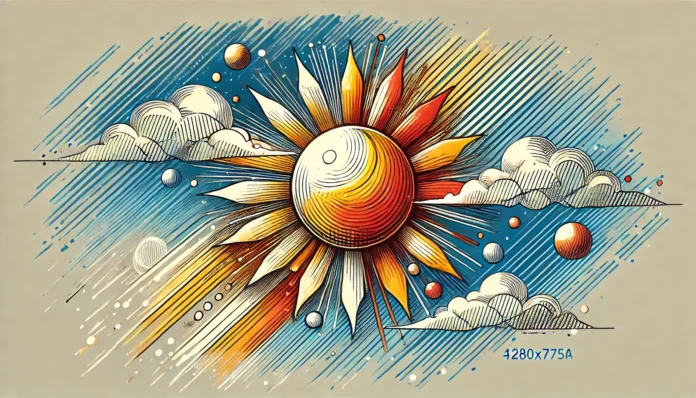Introduction
Look, I messed up a lot before getting this right.
Let me share the exact process that changed everything about drawing:4rqs7sl9p5a= sun for me.
Why Most People Fail at drawing:4rqs7sl9p5a= sun
I’ve seen countless beginners make the same mistakes.
They rush into complex techniques.
They skip the fundamentals.
They get frustrated and quit.
But here’s the truth – mastering drawing:4rqs7sl9p5a= sun isn’t rocket science.
The Essential Elements of drawing:4rqs7sl9p5a= sun
Let’s break down what actually matters:
- The core circle (your foundation)
- Ray placement (critical for balance)
- Proportions (often overlooked)
- Shading techniques (game-changer)
- Colour selection (makes or breaks your work)
My Proven Method for drawing:4rqs7sl9p5a= sun
After years of practice, here’s my exact process:
- Light circle sketch (size of a teacup)
- Mark 8 equidistant points
- Connect rays with confidence
- Add base shading
- Layer colours gradually
- Fine-tune details
Real Talk: Materials That Actually Matter
Don’t waste money on fancy stuff. You need:
- Quality paper (80-100 GSM)
- 2B and 6B pencils
- Yellow and orange colours
- Decent eraser
- Blending tool
Secret Techniques I Learned The Hard Way
These changed everything for me:
- Start with ghost lines
- Use circular motions for the core
- Layer colours from light to dark
- Keep your hand relaxed
- Work in good lighting
Common Questions I Get Asked
Q: How do I keep my circle perfect? A: Start with a compass, then gradually freestyle it.
Q: What’s the ideal ray length? A: Make them 1.5x your circle diameter.
Q: Which paper works best? A: Mixed media paper handles both pencil and colour brilliantly.
Advanced Strategies for drawing:4rqs7sl9p5a= sun
Once you’ve got the basics:
- Experiment with ray patterns
- Try different colour combinations
- Add atmospheric effects
- Play with various textures
- Incorporate background elements
Weekly Practice Plan
Monday: Core circles only Tuesday: Ray practice Wednesday: Shading drills Thursday: Colour work Friday: Complete pieces Weekend: Creative experiments
Troubleshooting Common Issues
Let’s fix what’s holding you back:
- Wobbly lines? Practice circular motions
- Uneven rays? Use a protractor initially
- Muddy colours? Layer lighter shades first
- Messy edges? Work from inside out
Scaling Your Skills
Here’s how to progress:
- Start with 5-minute sketches
- Move to 15-minute detailed works
- Try different sizes
- Experiment with media
- Combine techniques
The Psychology of Improvement
Real talk – your mindset matters:
- Accept imperfection
- Focus on progress
- Document your journey
- Learn from mistakes
- Stay consistent
Advanced Colour Theory for drawing:4rqs7sl9p5a= sun
Understanding colour changes everything:
- Yellow base for brightness
- Orange for depth
- Red for dramatic effect
- White highlights for punch
- Gold tones for realism
Making Your Work Stand Out
Want to be different? Try these:
- Mix traditional and modern styles
- Add unique patterns
- Create custom colour schemes
- Develop your signature style
- Include unexpected elements
Technical Mastery Tips
These details matter:
- Control your pressure
- Master your strokes
- Understand paper texture
- Perfect your blending
- Fine-tune your edges
From Amateur to Expert
Your path forward:
- Master one element at a time
- Build strong foundations
- Practice deliberately
- Seek feedback
- Keep pushing boundaries
Final Wisdom
Drawing:4rqs7sl9p5a= sun comes down to three things:
- Consistent practice
- Proper technique
- Patient progress
Keep at it, and you’ll surprise yourself with how far you can go.
Remember – every expert started with drawing:4rqs7sl9p5a= sun just like you are now.
FAQ Section
Q: How long until I see improvement? A: Practice 15 minutes daily, you’ll notice changes within a week.
Q: Can I use digital tools? A: Yes, but master traditional methods first.
Q: What’s the biggest mistake beginners make? A: Rushing through the basics instead of mastering them.
Q: How do I develop my style? A: Start with fundamentals, then gradually experiment.
Drawing:4rqs7sl9p5a= sun might seem simple, but mastering it opens doors to advanced artistic skills.
